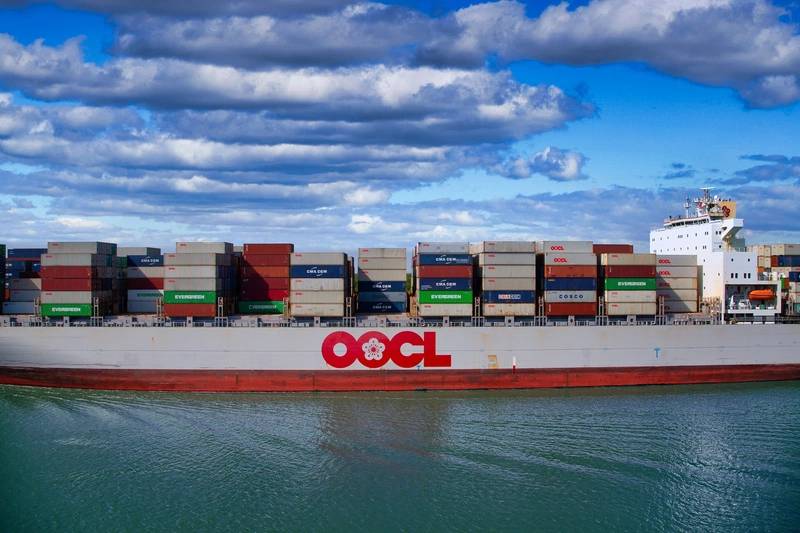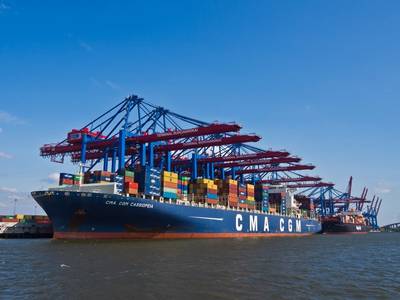How Event-driven Technologies Can Transform the Shipping Industry
The Suez Canal blockage laid bare many of the challenges being faced by the global shipping industry today. With 12% of global trade passing through the canal each day, the total revenue lost from delayed, damaged or lost goods due to its blockage is estimated to be up to $10 billion. Many of the organizations that faced a logistical nightmare in the face of the Ever Given blockage struggled to respond to things as they happened and make informed predictions about future occurrences due to the limited tools at their disposal.
On top of unexpected logistical challenges like the Ever Given incident, ocean logistics companies are also having to deal with fast-moving consumer demand and quickly respond to unexpected scenarios (think toilet roll shortage of 2020). While many shipping companies operate on a batch-oriented basis, manufacturers are ahead and moving to just-in-time IT. Manufacturing customers will be demanding more up-to-date and granular data from their shipping partners as they upgrade their technologies.
Not to mention, geopolitical instabilities could strike at any time. Shipping companies need to be able to adjust their capabilities in real-time to deal with changing situations, such as certain nations asserting their rights over areas of sea. And even in “perfect” industry conditions, there will always be disruptions to the shipping supply chain, whether that’s heavy storms slowing ships down or containers breaking loose and causing delays.
In an age where shipping companies need to be able to act fast to keep cargo flowing smoothly, meet changing customer demands and minimize excessive resource expenditure, event-driven technologies become essential to provide a full data picture that drives real-time and predictive decision-making.
Event-driven technologies: How can they help?
An event-driven architecture (EDA) is a “software design pattern in which decoupled applications can asynchronously publish and subscribe to events via an event broker (modern messaging-oriented-middleware).”
Events can essentially be described as occurrences. From a container picking up a load to a ship arriving at a port—all of these are events and are often delivered through IoT devices. Event streaming, as part of an event portal, allows teams from across departments and geographical regions to share, visualize and ultimately respond to those events as they happen. Some of the key benefits that companies gain from event-driven technologies are improved agility, scalability and resilience.
Let’s dive a little deeper into how these work in the context of the shipping industry.
 © dbvirago / Adobe Stock
© dbvirago / Adobe Stock
Going event-driven in the shipping industry
Event-driven technologies combined with artificial intelligence (AI) and machine learning (ML) allow shipping companies to optimize the time schedules and expenditure on their cargo as it flows through the supply chain. Let’s take an example to see how this works in ocean logistics.
Through AI and the internet of things (IoT), the shipping company OOCL (Orient Overseas Container Line) uses predictive analytics to optimize and forecast vessel schedules and berth activities. AI and event-driven technology adoption has been so successful for OOCL that CEO Steve Siu said the company expects to save $10 million in operating costs annually.
This cargo tracking technology will help to prevent issues like port congestion. With real-time data coming in from ports’ track and trace devices, captains can predict the speed their vessel needs to move at to avoid port congestion and optimize travel time. Ports themselves are also leveraging event-driven tech, with Singapore’s Tuas Port using Solace PubSub+ as the backbone for its automation technologies. Tuas Port is now on track to become the world’s largest fully automated container terminal.
Event-driven predictive technology could also help in situations similar to the Suez Canal blockage. Shipping companies may have been questioning whether or not to go around the length of Africa (a costly option but one that provides certainties) or wait it out at Suez. With real-time data that allows companies to model potential scenarios, they can calculate the costs associated with different options and make more informed decisions.
Event-driven technologies also help shipping companies, port and terminal officers and all parts of the shipping and logistics supply chain to optimize their route planning, bunkering and port and terminal use, all the while providing greater satisfaction and reduced costs to the customers.
At any given time, Unilever has 12,000 containers in flights, 1,500 vessels and 200 shipping lines. As the company adapts to supply chain challenges, it still needs to meet customer expectations while reducing unnecessary expenditure as a result of unused or delayed containers.
Unilever has developed the Virtual Ocean Control Tower, an unmanned system that seamlessly connects all parties in the chain through a real-time electronic data interchange (EDI) information flow. The system gives Unilever teams access to end-to-end, continually updated data on the status of each shipment at every single stage of its journey. The Virtual Ocean Control Tower uses ML and predictive analytics to help proactively identify potential issues and alert anyone who needs to know to mitigate unnecessary damage, costs or delays. It also provides benefits to the company’s customers, who gain access to granular data on the status and location of all of their expected shipments at any given point, allowing them to better plan their own operations.
Finally, event-driven technology allows ocean freight companies to make vital proactive decisions to conserve the state and quality of their cargo.
One crucial example of this is the pharmaceutical supply chain, which is at a critical point as countries across the world work to conduct mass vaccinations against COVID-19. Event-driven technologies can play a key role in ensuring the maximum amount possible of these vaccines makes it to their final destination in a usable state—allowing for real-time insights on container conditions, ETAs or any other data that may compromise the vaccine or disrupt the supply chain further along.
So, the benefits and use cases for event-driven technologies in the ocean logistics industry are clear. How can companies in the industry get started?
Getting started with event-driven ocean logistics
Players in the shipping industry looking to get started with event-driven technologies should do so gradually. It will undoubtedly take extensive planning and preparation, but the effects will multiply the more they incorporate it into the business. Unilever started off with the specific goal of being able to visualize where containers were, but other benefits came (almost) for free as a result, including access to real-time manufacturing data.
Organizations looking to upgrade their IT systems shouldn’t assume that the latest industry buzzword is the right way forward. Leaders need to speak to their IT teams, understand what kind of basis they already have in place and conduct an up-front analysis of risk vs. potential gains.
Companies with an organizational culture that’s open to new technologies should start earlier and bigger. Those who are more conservative should tread more carefully and think about who they want to partner with and where the technology will help. It’s ultimately about bringing on new technology which can bring existing systems up to speed.
It’s also vital to consider matters of data governance and management when handling newfound amounts of data as a result of embracing event-driven technologies. IT leaders need to have a grasp on who will ensure that that data is in the right hands and the right place before they jump into implementation.
The ocean logistics industry is not without its challenges and a certain amount of disruption is inevitable to an extent. After all, an ocean wouldn’t be an ocean without a few waves. With the help of event-driven technologies, those in the shipping industry can ensure they see those waves coming, and when they do, mitigate the worst of their effects.











